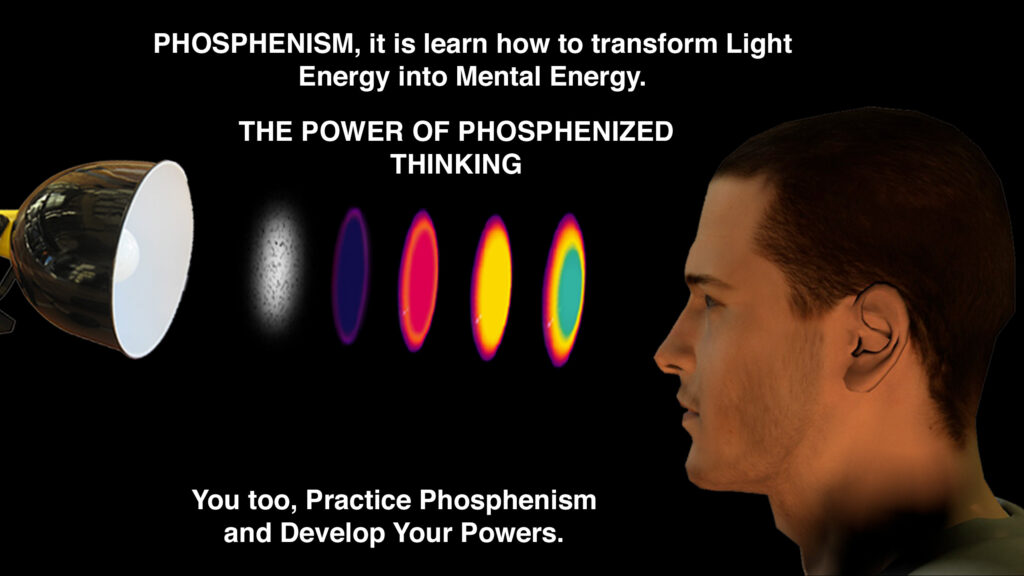PHOSPHENIC MIXING APPLIED TO EDUCATION IN AFRICA
By: Brou KOUAME (Abidjan – Ivory Coast) Vice-president of the ASR (Alphabetization and Health in Rural Areas) NGO Vice-president of OPGE (Organization for the Protection and the Management of the Environment)
Education can be defined as a set of methods which purpose is to transmit knowledge to an individual (child or adult). It is, first and foremost, the action of directing the student on the path of learning.
If the scientific aspect of modern educational teaching differs from the teaching provided by traditional societies, the latter have always transmitted knowledge to the youth around a fire or during the full moon. These customs are apparently strongly related to Phosphenic Mixing, a technique that consists in combining a thought with a phosphene produced by focusing on a source of light for a short time.
With regard to these traditions, could Phosphenic Mixing always have been used in Africa, for the transmission of knowledge to the new generations? What is the state of application of that traditional method today?
I/ A teaching method related to Phosphenic Mixing
As far as the memory of traditional african societies can go, no knowledge related to cosmogony, legends or history has been transmitted without the presence of a source of light (Fire, the Sun, the Moon). The great cosmic truths were disclosed during initiations performed around large fires. After the physical trials, the candidates presented themselves in front of a large fire with enormous flames, in order to receive teachings that, for a long time, were hidden from the profane. This sheds a new light on certain spiritual realities.
It should be noted that the transmission of knowledge was purely oral and, consequently, that it had to be engraved permanently in the memory of the learners.
In our villages, during the telling of stories around the fire, we used to learn social values that we had to integrate in our behavior. Our eyes were fixed on the flames that undulated ceaselessly. And our thoughts followed these rhythms. Sometimes, we would perceive images stemming from the depths of our selves.
Moonlight, the starry sky, also represented chances of learning and being creative. That is why these moments were favorable to the experimentation of new games for young girls and boys. It was rather common for a young child to identify his/herself to a star or another celestial object.
Focusing on sources of light has doubtlessly influenced positively the political, social and cultural development of our societies, whether consciously or unconsciously. The African griots (an oral historian, guardian of the village and of the genealogy of its inhabitants) in the Manding (the Mandingues being a group of populations living in Western Africa) learnt the history of great men by practicing Phosphenic Mixing. It was also the case with craftsmen, weavers, sculptors, potters… who have experienced an amplification of their inspiration thanks to that method.
However, modern educational teaching methods have neglected that technique.
II/ The loss of the method of Phosphenic Mixing because of colonization
The educational system inherited from colonization has been the demise of that method. Our governments have tried many different educational systems ending up today with the method by competence. Such a multiplicity of methods of education reveals a difficulty: the search for a suitable educational method in order to improve the results of students and schoolchildren. However, with the new, so-called evolutive methods, the success rate in our schools has diminished, year by year. Flaws and deviations in our societies soon follow: school failure, corruption, decline of moral values. These situations are the consequence of neglecting an educational method that makes use of Phosphenic Mixing. That method used to contribute to the development of a human being as a whole, intellectually as well as spiritually.
These days are an era of technology and information characterized by the appearance of various tools for simplifying learning. However, there is so much failure! It even claimed that gaming consoles or pen and paper games are adequate means to preserve the freshness of our memory.
In view of such a situation, Phosphenic Mixing appears as a sane alternative, natural and durable. Hence the necessity to valorize or re-valorize it in Africa.
III/ Valorizing learning with Phosphenic Mixing
Today, Dr Lefebure’s research has demonstrated that Phosphenic Mixing (i.e. learning by combining a thought with focusing on a source of light) was the foundation of the influence of Egyptian, Greek and Roman civilizations. Our traditional societies also used to utilize that technique, consciously or not, for transmitting knowledge.
Dr LEFEBURE has underscored that the decline of the civilizations mentioned came to pass because they had abandoned or forbidden that practice. Consequently, to save Africa from destruction, it is necessary to use that learning method. It is not new, as it is actually the foundation of civilization.
The appropriation of Phosphenic Mixing by Africa will help raising the level of education, increasing the rate of alphabetization, optimizing creativity, among other things. In Ivory Coast for instance, the rate of success to the Baccalaureate exam was 20% in 2009 against 38% in 2008. In 2010 that rate went back up to 24,51%. Everything seems to show that it is the system itself that is unhealthy.
Conclusion
Education, teaching and Phosphenic Mixing can be made compatible in order to lead to a better efficiency. That method certainly has a future in Africa, as it can end the prejudices (confiscation of intelligence, bewitchment…) that are used to explain the school failure of many children.


